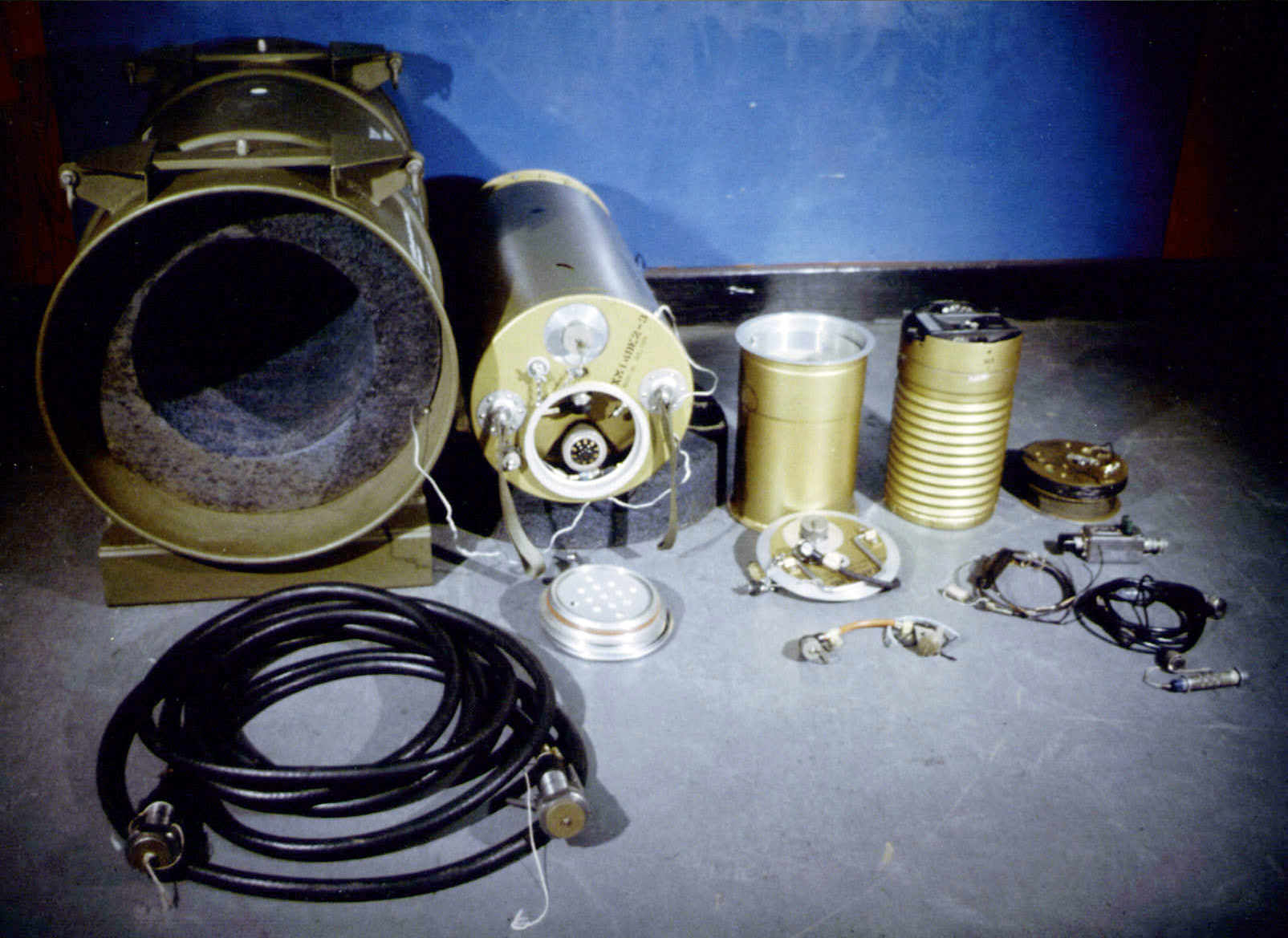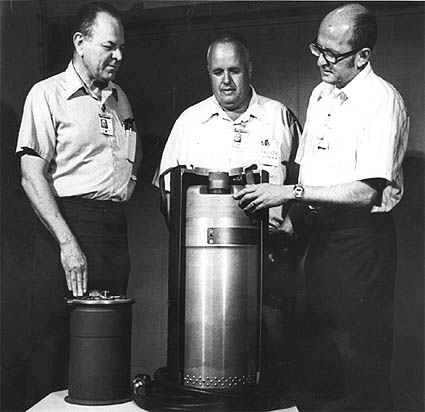Winston
Lorenzo von Matterhorn
- Joined
- Jan 31, 2009
- Messages
- 9,560
- Reaction score
- 1,748
This guy or whoever writes his scripts often makes obvious mistakes in his videos. In this one, he states that 1 kiloton is equal to 10,000 tons of TNT.
Sandia National Labs SADM training film
https://rawnslnotebook.tumblr.com/p...-wanted-to-post-two-quick-videos-from-a-piece
Atomic Demolition Munitions
https://en.wikipedia.org/wiki/Atomic_demolition_munition
Tactical Atomic Demolition Munition (TADM)
The Mk 30 Mod 1 Tactical Atomic Demolition Munition (TADM) was a portable atomic bomb, consisting of a Mk 30 warhead installed in a X-113 case. The X-113 was 26 inches (66 cm) in diameter and 70 in (178 cm) long, and looked like corrugated culvert pipe. The whole system weighed 840 pounds (381 kg). Production of the TADM started in 1961 and all were removed from stockpile by 1966. A weapons effect test of the TADM was made in the 1962 Johnny Boy ("Johnnie Boy") shot of the Dominic II series (which is more accurately referred to as Operation Sunbeam), the yield of Johnny Boy/Johnnie Boy was about .5 kt. A preceding ADM test which resulted in a comparable yield, was test shot "Danny Boy" of Operation Nougat, also producing a yield of about 0.5 kiloton.
Special Atomic Demolition Munition (SADM)
https://en.wikipedia.org/wiki/Special_Atomic_Demolition_Munition
Apparently used a modified Davy Crockett W54 warhead. The W54 had a yield of 10 tons to 1 kiloton.

Medium Atomic Demolition Munition (MADM)
https://en.wikipedia.org/wiki/Medium_Atomic_Demolition_Munition
Medium Atomic Demolition Munition (MADM) was a tactical nuclear weapon developed by the United States during the Cold War. They were designed to be used as nuclear land mines and for other tactical purposes, with a relatively low explosive yield from a W45 warhead, between 1 and 15 kilotons. Each MADM weighed less than 400 lb (181 kg) total. They were deployed between 1965 and 1986.


Sandia National Labs SADM training film
https://rawnslnotebook.tumblr.com/p...-wanted-to-post-two-quick-videos-from-a-piece
Atomic Demolition Munitions
https://en.wikipedia.org/wiki/Atomic_demolition_munition
Tactical Atomic Demolition Munition (TADM)
The Mk 30 Mod 1 Tactical Atomic Demolition Munition (TADM) was a portable atomic bomb, consisting of a Mk 30 warhead installed in a X-113 case. The X-113 was 26 inches (66 cm) in diameter and 70 in (178 cm) long, and looked like corrugated culvert pipe. The whole system weighed 840 pounds (381 kg). Production of the TADM started in 1961 and all were removed from stockpile by 1966. A weapons effect test of the TADM was made in the 1962 Johnny Boy ("Johnnie Boy") shot of the Dominic II series (which is more accurately referred to as Operation Sunbeam), the yield of Johnny Boy/Johnnie Boy was about .5 kt. A preceding ADM test which resulted in a comparable yield, was test shot "Danny Boy" of Operation Nougat, also producing a yield of about 0.5 kiloton.
Special Atomic Demolition Munition (SADM)
https://en.wikipedia.org/wiki/Special_Atomic_Demolition_Munition
Apparently used a modified Davy Crockett W54 warhead. The W54 had a yield of 10 tons to 1 kiloton.

Medium Atomic Demolition Munition (MADM)
https://en.wikipedia.org/wiki/Medium_Atomic_Demolition_Munition
Medium Atomic Demolition Munition (MADM) was a tactical nuclear weapon developed by the United States during the Cold War. They were designed to be used as nuclear land mines and for other tactical purposes, with a relatively low explosive yield from a W45 warhead, between 1 and 15 kilotons. Each MADM weighed less than 400 lb (181 kg) total. They were deployed between 1965 and 1986.






